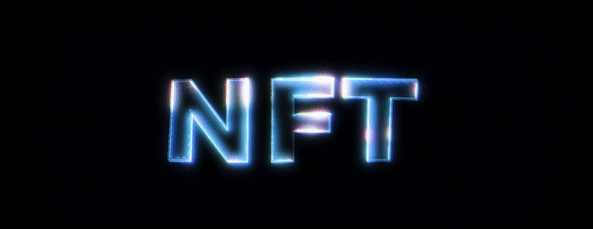
The promise of Web3 is that creators and users can finally own the upside from their work because trust can be set by code. But we’re not quite there yet. Exploring Web3 today is fraught with bad user experience, high fees, confusing terms, and scams.
Peter Yang, product lead at Reddit, outlines a three-point plan to get regular folks like you or me onto Web3 in a blog post Sponsored by Index Coop, a provider of on-chain crypto indexes. His plan includes an upgrade to the exchanges, wallets, and NFT marketplaces that support decentralized finance models.
Ultimately, the combination of these three elements could act like a social network and a recommendation and search engine for users to navigate and engage with the next-gen internet.
READ MORE: Web3 Onramps for the Next 1 Billion People (Creator Economy)
Getting Onto Web3 Today
Why would a regular person care about Web3? Yang thinks the most common reason is that they want to make money, and he’s probably not wrong. So, to get into Web3, there’s a three-step process:
- Use an exchange to buy cryptocurrency.
- Set up a wallet and transfer crypto there.
- Transact – such as buying an NFT.
Yang thinks each of these steps could be significantly improved in order to onramp the next one billion users. Here’s his recipe, taking each in turn.
Exchanges
Exchanges are close cousins of the way we currently transact online. With an exchange, you:
- Log in with a regular username and password.
- Deposit money from a bank or credit card.
- Use that money to buy and sell crypto.
However, many people only use exchanges to buy and sell crypto. They move their tokens to a standalone wallet to do anything else (such as buying an NFT). That’s why exchanges are diversifying into wallets and NFT marketplaces.
Coinbase, for example, already has 89 million accounts linked to a bank or a credit card, and has a Coinbase wallet from which users can buy NFTs from a Coinbase marketplace.
Wallets
Yang identifies two problems with wallets today.
“Moving assets to a wallet is nerve-wracking. A wallet’s public address is a long string of random characters. One typo and your assets are gone forever. Secondly, seed phrases just aren’t that secure. Scammers will go to great lengths to phish you into sharing it. One mistake and your assets are gone forever.”
To counter this, wallets can: let people buy crypto directly with their credit card or bank account, skipping exchanges altogether. Wallets can also improve UX and security.
“There’s a lot to improve in wallet usability,” Yang says. “For example, wallets can warn people when they’re signing a smart contract from an unverified source.”
But wallets can do so much more. They can be your identity in Web3.
“Wallets can ask you to set up a public address that’s much easier to remember (such as peteryang.eth). They can also let you create a public Web3 profile page to highlight your NFTs, on-chain credentials, and more. Wallets can make it easy for you to find, follow, and message other wallets. Wallets can show you what people you follow are actually doing on-chain and recommend top trending NFTs and apps in your network.”
Wallets can also be your:
— Peter Yang (@petergyang) March 17, 2022
1. Web3 identity. Create a profile and showcase your NFTs and on-chain activity.
2. Web3 social network. Find, follow, and message other wallets.
3. Web3 app store. Recommend NFTs and apps based on social context. pic.twitter.com/VB2eSgYhxj
In this sense, Web3 is a social network. Every dapp (decentralized application) and NFT project wants to onboard more users. The social context is incredibly powerful for discovery.
“Today, wallets acquire customers primarily through other NFT projects and dapps. In the future, wallets will be the central hub for your Web3 identity, social network, and app discovery.
NFT Marketplaces
If wallets will help drive discovery through social context, where does that leave NFT marketplaces such as OpenSea?
“Most NFT transactions come from a small handful of traders that are chasing the next flip. But marketplaces should focus on the next 1B people who can buy NFTs but don’t.”
Specifically, Yang thinks they should make it easy for people to buy NFTs directly with credit cards, which OpenSea already supports.
Yet OpenSea’s collector profiles are missing basic social features such as a follow button and the ability for collectors to customize their profile.
“Making people care about their profile and social graph will help marketplaces build stickiness.”
Yang also thinks NFT marketplaces need to evolve discovery from focusing on top trending projects to personalized recommendations and search based on each user’s on-chain activity and preferences.
“To put it simply, NFT marketplaces should be the Web3 Google or Amazon.”
Dark Horse Candidates for Web3 Onramps
Exchanges, wallets, and NFT marketplaces are the obvious onramps, but let’s not forget these dark horse candidates like games such as Axie Infinity, which already have a thriving in-game trading environment and existing social networks.
Twitter, for example, has shipped basic features like setting an NFT as your profile pic. “It’s already the go-to platform for Web3 people to connect with each other and discover cool projects. Why not let people add a wallet and track on-chain activity as well?”
The Next Phase
The next phase of Web3 could target many more people and look like this:
- Buy crypto and NFTs directly with your credit card or bank account.
- Set up a profile to showcase your NFTs and on-chain credentials. Follow and message other users, join interest groups, etc.
- Through your network, discover and use “amazing” Web3 dapps and NFTs.
Says Yang, “I truly believe that wallets are the closest to making this vision a reality.”


